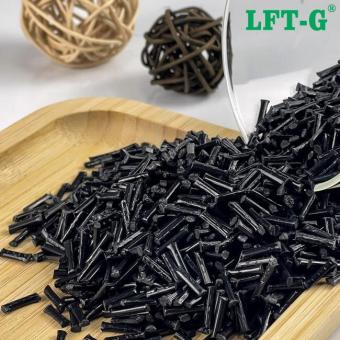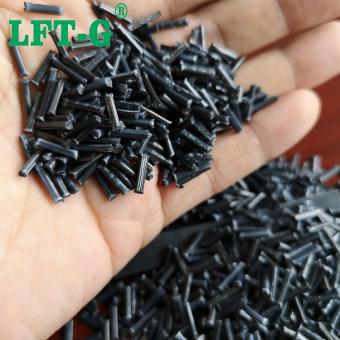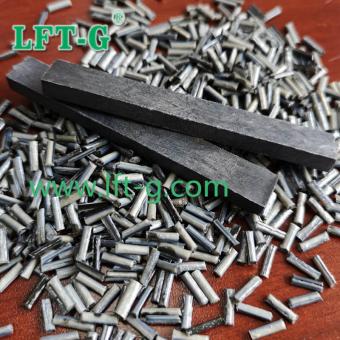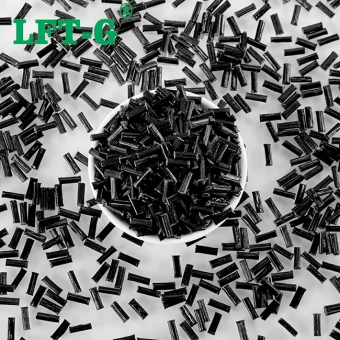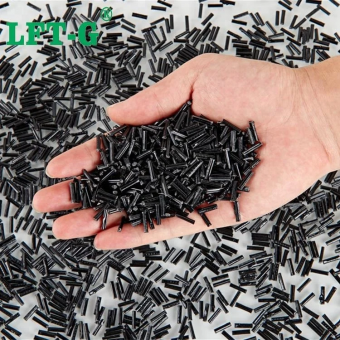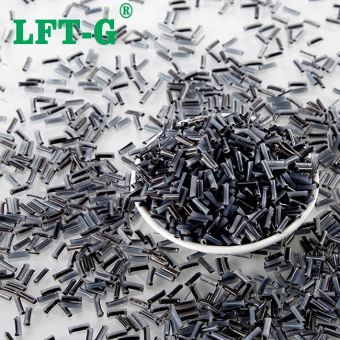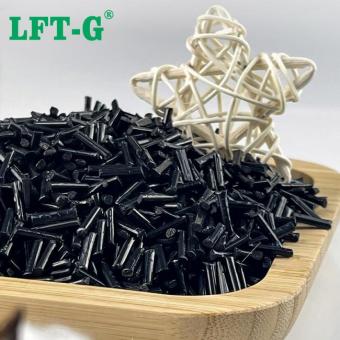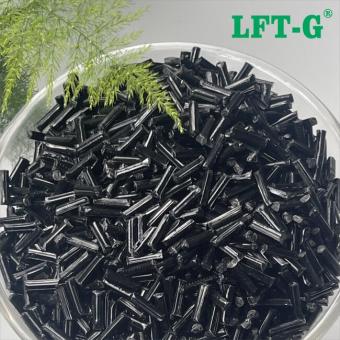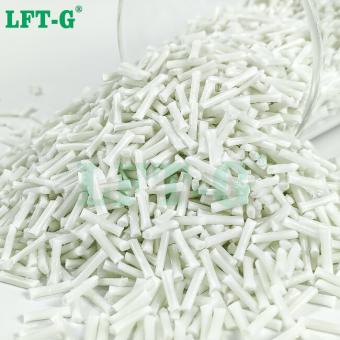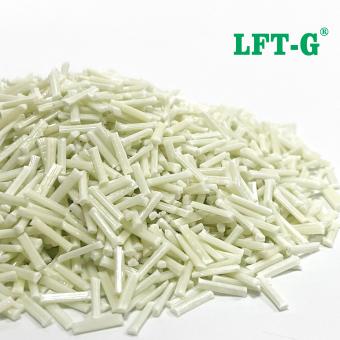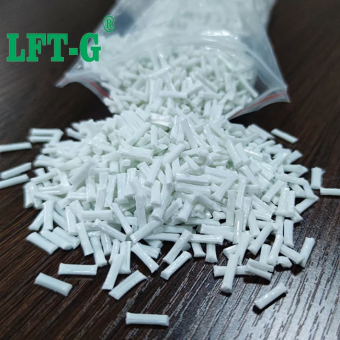-
PP Carbon FiberThe modified polypropylene material reinforced by carbon fiber has a series of advantages, such as light weight, high modulus, high specific strength, low coefficient of thermal expansion, high temperature resistance, heat shock resistance, corrosion resistance, good vibration absorption, etc., and can be applied to auto parts such as automobile sub-instrument assembly.
- polypropylene fiber reinforced concrete
- carbon reinforced fiber
- carbon fiber reinforced polymer
- polypropylene pp
- pp pellets
- carbon compounds
Tags :
-
Long Glass Fiber Reinforced Composites TPU PelletsTPU (Thermoplastic Polyurethane) long glass fiber reinforced composite is a high-performance material that combines the excellent flexibility, abrasion resistance, and weatherability of TPU with the superior strength and dimensional stability of long glass fibers.
- tpu plastic
- tpu plastic material
- tpu thermoplastic
- reinforced plastic
- fiberglass reinforced plastic
- fiber glass manufacturer
Tags :
-
LFT PLA Manufacturer Carbon Fiber filled Compounds green materialsPLA is an opaque plastic suitable for making medical components as well as for prototyping applications. PLA is a high-strength but brittle plastic that cannot be used in applications that experience shock loads. The lactic acid building blocks of PLA can be made from fermented plant starch, like corn, under controlled conditions. It takes less energy to produce PLA than petroleum-based thermoplastics, making it relatively eco-friendly. PLA is often regarded as being biodegradable. What Are the Advantages of PLA? Some of the advantages of PLA plastic are listed below: Biocompatibility: PLA is non-toxic to humans. It can remain in contact with the skin for long periods without any negative effects. The decomposition products of PLA are also non-toxic: it degrades into harmless lactic acid. It is often used for stents and sutures that are designed to break down inside the body over several months. Low-Energy for Production: PLA takes less energy to produce compared to other petroleum-based plastics due to its relatively low melting point of 165 °C. The polymerization of PLA also consumes 25 to 55 % less energy than other conventional petroleum-based polymers. Mechanical Properties: PLA has good room temperature strength and stiffness, but is not suitable for sudden impact loads. Food Safe: PLA is non-toxic and is generally recognized as safe by the FDA (Food and Drug Administration). FAQ *What processes are LFT materials suitable for? LFT material is mainly suitable for injection molding, as well as partial extrusion. The requirements for injection molding machines are mainly reflected in the nozzle. *Why are your products so long? Why does the material I used before, filled with glass fiber, look different than this? Although long fiber modified materials (LFT) and short fiber modified materials (SFT) are through the combination of fiber and resin to produce higher properties of the complex. However, the two materials are different from the production process, internal structure, appearance, performance, application and so on. Production process: The fiber of SFT is chopped and mixed with resin, and the production process of LFT is melt impregnation. Internal structure: The fibers inside SFT particles are short and disordered, while the fibers inside LGF are neatly arranged and longer. Appearance: The length of SFT is usually less than 3 mm, and the length of LFT is 5-24mm. Performance: LFT impact performance than SFT increased 1-3 times, tensile strength increased by more than 50%, mechanical properties improved by 50-80%. Application: LFT is more suitable for use in products with high strength requirements, as load-bearing parts and structural parts. *What is your MOQ? MOQ is 25kg *Do you support custom service? Color: Please let us know which Pantone color you want to customize Length: Lengtjh between 5mm-24mm can be customized. If there are no special requirements, the length of the plastic particles is 10-12 mm. Our custom service is free, but the MOQ is 500kg. *Where is your factory? At present, our company headquarters and factory are in Xiamen, China. We also have several offices in other provinces in China, and an exclusive agent in Turkey.
- PLA recycled
- fiber filling polymer instead of metal steel
- Sample free natural plastic new CFRP
- PLA Carbon
- China manufacturer PLA
- pla resin customized service
Tags :
-
Advanced Carbon Materials Polyetheretherketone Resin Long Carbon Fiber Reinforced PelletsPEEK long carbon fiber reinforced material provides exceptional thermal stability, outstanding chemical resistance, and superior mechanical properties, making it ideal for the most demanding engineering applications. With its high strength, rigidity, and low friction characteristics, this material is widely used in aerospace, automotive, and industrial sectors. Its ability to withstand extreme temperatures and harsh chemical environments ensures reliable performance and durability in critical applications.
- peek automotive industry
- uses of peek in automotive industry
- peek composite
- peek pellets
- carbon fiber reinforced peek market
- peek-cf
Tags :
-
Advanced Carbon Materials Polyphenylene Sulfide PelletsPPS long carbon fiber reinforced material features outstanding thermal stability, exceptional chemical resistance, and excellent mechanical strength, making it ideal for high-performance engineering applications. With superior stiffness, low moisture absorption, and inherent flame retardancy, this material is widely used in automotive, aerospace, and electrical industries. Its high strength and dimensional stability ensure reliable performance even in extreme environments.
- China manufacturer carbon fiber compounds
- PPS raw materials
- PA12 black carbon
- pps resin suppliers
- pps plastic melting point
- pps-cf
Tags :
-
Advanced Carbon Materials Nylon 12 Resin Long Carbon Fiber Reinforced PelletsPA12 long carbon fiber reinforced material offers excellent impact resistance, low moisture absorption, and dimensional stability, making it ideal for demanding engineering applications. With superior mechanical properties and lightweight advantages, this material is widely used in automotive, electronics, and electrical industries. Its high strength and rigidity ensure stable performance even in harsh environments.view more
-
LFT-G® Polyamide 66 Long Carbon Fiber Filled Compounds Injection molding pelletsPA66-NA-LGF is a compounds filling long glass fiber
- Reinforced thermoplastic resin composites
- Nylon PA 6.6 high strength plastic
- China manufacturer engineering plastic
- CF filament enhanced materials
- long cut fiber instead metal and steel
- high mechanical properties
Tags :
-
Advanced Carbon Materials Nylon 6 PelletsPA6 long carbon fiber reinforced material offers high strength, excellent impact resistance, and lightweight properties. It provides outstanding dimensional stability and fatigue resistance, making it ideal for automotive and industrial applications. Suitable for replacing metal components to achieve weight reduction and enhanced performance.
- polyamide nylon pa6
- pa6 price per kg
- nylon pa6 plastic material
- CFRP materials
- China manufacturer carbon fiber
- Polyamide 6 plastics
Tags :
-
Advanced Carbon Materials Polypropylene PelletsPolypropylene long carbon fiber reinforced material provides exceptional strength, stiffness, and lightweight properties, making it an ideal choice for high-performance engineering applications. With excellent impact resistance, chemical resistance, and cost-effectiveness, this material is widely used in automotive, industrial, and consumer goods sectors. Its durability and thermal stability ensure reliable performance even under challenging conditions.view more
-
ProFiber Long Glass Fiber Reinforced PP High Performance Homopolymer for Injection MoldingOur Glass Fiber Reinforced Polymer with High-Performance offers exceptional strength and durability, perfect for injection molding PP applications.
- Glass Fiber Reinforced Polymer
- High-Performance PP Material
- Injection Molding PP
- Copolymer Plastic Material
- Reinforced Thermoplastic
- Durable Plastic for Automotive
Tags :
-
High Temperature Resistant Nylon PPA with Filler Injection MoldingOur high-performance PPA (polyphthalamide) long glass fiber reinforced composite is engineered to deliver exceptional mechanical strength, thermal stability, and durability. Designed for demanding applications, this composite material offers a superior balance of stiffness, impact resistance, and processability. Ideal for automotive, electrical, and industrial applications, it sets a new benchmark in high-performance thermoplastic composites.
- PPA long fiber compounds manufacturer
- ppa gf30
- ppa plastic resin
- LFT-G
- ppa material properties
- China factory plastic supplier
Tags :
-
Long Glass Fiber Reinforced Composites PBT SeriesPBT has properties similar to those of PET (polyethylene terephthalate). It is known for its dimensional stability, low moisture absorption, high strength, stiffness, and chemical, UV, and thermal resistance. It is commonly used in automotive fenders and interior trim pieces, power tool housings, and electrical enclosures.
- High-performance PBT composite
- Injection molding PBT resin
- High-strength industrial plastic parts
- Flame-retardant PBT composite
- Structural plastic replacement for metal
Tags :

 e-mail
e-mail English
English français
français Deutsch
Deutsch русский
русский italiano
italiano español
español português
português العربية
العربية 日本語
日本語 한국의
한국의 中文
中文












